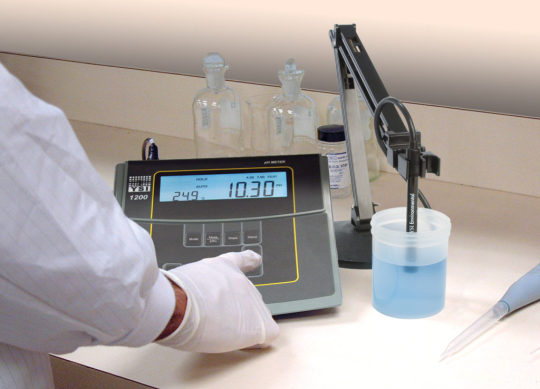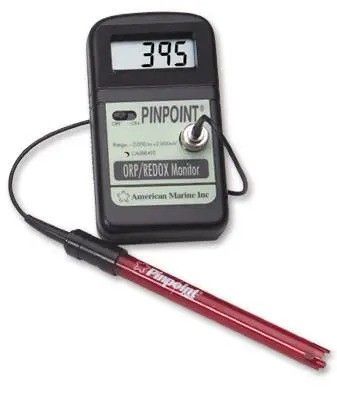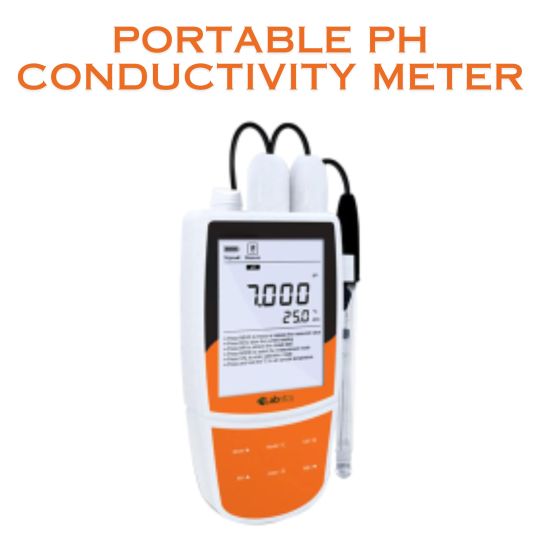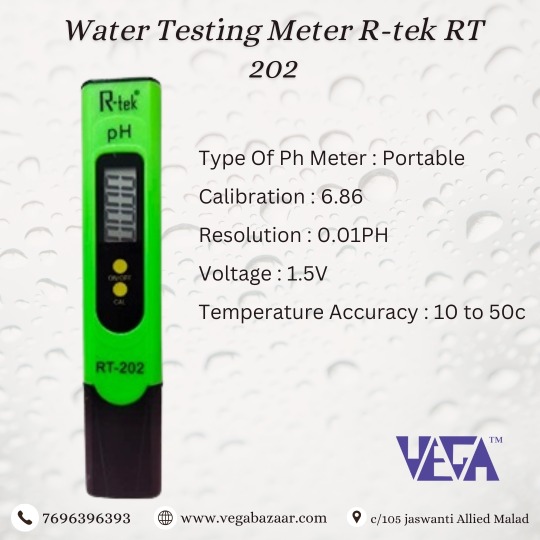#ph meter calibration
Text
Mastering pH Calibration: Essential Steps for Reliable Results

In the realm of scientific analysis and industrial processes, Ph calibration plays a pivotal role in ensuring the accuracy and reliability of measurements.
Whether in laboratories, manufacturing plants, or research facilities, maintaining precise pH levels is crucial for successful outcomes.
This article aims to shed light on the fundamental steps necessary for achieving dependable pH calibration, emphasising the significance of adherence to these key processes for accurate and consistent results.
Key Steps for Reliable pH Calibration
The concept of pH, which measures the acidity or alkalinity of a substance, holds immense relevance across diverse industries, including pharmaceuticals, food and beverage, environmental monitoring, and wastewater treatment.
The necessity of pH calibration lies in its ability to maintain the accuracy of pH measurements, thereby ensuring the integrity of experimental data and industrial processes.
Choosing the Right Equipment
To embark on a successful pH calibration journey, it is imperative to select the appropriate equipment. This includes high-quality electrodes, buffers, and certified calibration solutions.
Utilising reliable and well-maintained equipment is paramount in achieving accurate results, as the quality of the tools directly influences the precision of the calibration process.
By prioritising the use of reputable equipment, individuals can instil confidence in the reliability of their pH measurements.
Preparing the Calibration Solutions
The creation of calibration solutions with specific concentrations is a crucial preparatory step in the pH calibration process.
This involves meticulous attention to detail and adherence to standardized protocols for the accurate formulation of calibration solutions.
By following a step-by-step guide and utilising precise measurements, individuals can ensure the creation of fresh and effective calibration solutions, laying the foundation for accurate pH calibration.

Calibrating the pH Meter
Once equipped with the necessary solutions, the calibration of the pH meter can commence.
This involves a systematic process of immersing the electrodes in the prepared solutions and making adjustments to align the meter with the expected values.
Additionally, understanding common troubleshooting tips and best practices during the calibration process can aid in overcoming potential challenges, thus enhancing the efficiency and accuracy of the calibration procedure.
Verifying Accuracy
Following the calibration process, it is essential to verify the accuracy of the calibrated pH meter.
This can be achieved through testing against known standards or reference samples, allowing individuals to identify any discrepancies and take corrective actions.
By addressing potential challenges and implementing effective troubleshooting methods, individuals can bolster the reliability of their pH measurements, thereby fortifying the integrity of their data and processes.
Maintaining Calibration Records
Recording and documenting all calibration activities is a critical aspect of the pH calibration process.
Detailed records encompassing dates, solutions used, adjustments made, and any pertinent observations serve as a valuable reference for future analyses and audits.
Organising and storing calibration records in an accessible manner facilitates traceability and accountability, further bolstering the reliability of pH measurements.
Conclusion
The meticulous execution of the aforementioned key steps holds the key to achieving reliable pH measurements. By embracing a proactive approach to Electrical Automation and emphasising the significance of precision and accuracy, individuals can elevate the integrity of their data collection and analysis.
By embracing these fundamental steps, individuals and businesses can rest assured that their pH measurements are consistently accurate, paving the way for reliable results across a myriad of applications. Let the pursuit of precision and reliability guide your pH calibration endeavours as the impact of meticulous calibration reverberates through the realms of science, industry, and innovation.
0 notes
Text
What Is A Water Softener System And How Does It Work?
#alkaline water machine#water ionization machine#alkaline water ionizer#alkaline water purifier#digital ph meter#ph meter calibration#ph meter for water#ph meter price#water softener system
0 notes
Text
Orion star a121 manual
ions
Measure pH, mV or relative mV with temperature · Perform up to a three point pH calibration with automatic buffer recognition or manual buffer entry · Simplified,
Manuals and User Guides for Thermo Scientific Star A121. We have 1 Thermo Scientific Star A121 manual available for free PDF download: Reference Manual · 3.
The Orion Star A121 portable pH meters feature a waterproof, IP67-rating. Please read this reference guide thoroughly. Any use outside of these instructions
Thermo Scientific Orion Star A121. pH Portable Meters combine simplicity with accuracy. A large LCD displays. pH or mV readings along with temperature.
Min Temperature (° F)23 ; Max Temperature (° F)221 ; Temperature Resolution0.1 ; Temperature Accuracy±0.1°C ; Temperature compensationAutomatic or manual
Measure pH, mV or relative mV with temperature; Perform up to a three point pH calibration with automatic buffer recognition or manual buffer entry; Simplified,
Thermo Scientific Orion Star A121 pH Portable Meters combine simplicity with accuracy. A large LCD displays pH or mV readings along with temperature. </p><br>, , , , .
#http://vk.cc/c7jKeU#nofollow#_blank#<p> </p><p> </p><center>ORION STAR A121 MANUAL >> <strong><u><a href= rel= target=>DOWNLOA#<br> thermo scientific orion star a111 electrode#<br> orion star a111 troubleshooting#<br> orion star a221thermo scientific orion star a111 calibration#<br> orion star a111 buffer error#<br> thermo scientific ph meter calibration#<br> orion stars#<br>#<br> </p><p> </p><p> </p><p>The Orion Star A121 portable pH meters feature a waterproof#IP67-rating. Please read this reference guide thoroughly. Any use outside of these instruct
0 notes
Text
I am Dr. Heinz Doofenschmirtz and the auto-titrator is my Perry the Platypus
Me: I've now restarted you six times, given you a new silver probe, calibrated the pH meter, untangled the cable forest, refilled all seven chemical bottles, and unplugged every goddamn connection on the instrument. I even turned up the temperature in the lab, in case you were just upset because you were a little cold. It's been two and a half hours and this test should have taken me max 40 minutes. Do you feel like working now?
Tiamo, burrowing under the covers: Nope. Try again tomorrow.
Me: I am going to BITE SOMETHING.
#I am *Such* a good scientist and all of my instruments certainly do not have their own equally derogatory names#I have found I am much less likely to bite if I listen to the hobbit soundtrack while actively declaring war on my work#help#chemistry#women in stem
35 notes
·
View notes
Text


Ah yes it is now the freshly transplanted poinsettia season of please stop wilting and root into the perfectly nice wet media you overdramatic bastards with a side of oh god I hope the pH meter is just poorly calibrated and an extra dose of I am lightly irrigating you five times a day with nice cool water stop having 90 degree soil temp and wilting
40 notes
·
View notes
Text

portable pH meter in Qatar
Laboratory equipment for water analysis and monitoring contains a wide range of instruments such as spectrophotometers, colorimeters, turbidimeters, digital thermostats, titration systems as well as equipment for electrochemical analysis, e.g. pH meters and conductometers. We provide water testing kits and water quality testing equipment for chlorine testing, benchtop meters, calibration kits, and marine water test kits for laboratory and commercial use. We also supply our products in different regions like Dubai, UAE, Kuwait, and Farwaniya.
https://najemalshahab.com/instruments-for-water-laboratory-analysis/
0 notes
Text
Understanding pH Meters for Water: A Comprehensive Guide

In our quest for clean and safe water, understanding its quality is paramount. One of the key indicators of water quality is its pH level. Whether you are a homeowner, an aquarium enthusiast, a hydroponic gardener, or work in a laboratory, knowing how to measure and interpret the pH of water is crucial. This is where pH meters come into play. In this blog post, we will delve into the world of pH meters for water, exploring their importance, functionality, types, and tips for accurate measurement.
What is pH and Why is it Important?
pH stands for "potential of Hydrogen" and is a scale used to specify the acidity or alkalinity of a solution. The pH scale ranges from 0 to 14:
A pH of 7 is considered neutral.
A pH less than 7 indicates acidity.
A pH greater than 7 indicates alkalinity.
Water with a balanced pH is essential for various applications:
Drinking water: Ideal pH levels ensure the water is safe for consumption and does not corrode plumbing systems.
Aquariums: Fish and aquatic plants thrive in water with specific pH levels.
Hydroponics: Plants grown without soil require carefully monitored pH levels for nutrient absorption.
Swimming pools: Proper pH levels prevent skin and eye irritation and maintain the effectiveness of disinfectants.
How Do pH Meters Work?
A pH meter measures the hydrogen-ion activity in a solution, indicating its acidity or alkalinity. Here’s how it works:
Electrode: The core component of a pH meter is the electrode, usually a glass probe, that measures the hydrogen-ion concentration.
Reference Electrode: This part contains a stable reference solution with a known pH.
Measurement: When the electrode is immersed in the water sample, it generates a voltage. The pH meter converts this voltage into a pH value, displayed on a digital readout.
Types of pH Meters
There are various types of pH meters, each suited for different applications:
Pen-style pH Meters: Compact and portable, ideal for quick tests in the field.
Handheld pH Meters: More robust than pen-style meters, suitable for both fieldwork and laboratory use.
Benchtop pH Meters: Larger and more accurate, designed for laboratory environments.
Inline pH Meters: Used in industrial applications for continuous monitoring of pH levels in processes.
Tips for Accurate pH Measurement
To ensure accurate pH readings, follow these tips:
Calibration: Regularly calibrate your pH meter using standard buffer solutions (pH 4.0, 7.0, and 10.0).
Cleaning: Clean the electrode before and after each use to prevent contamination.
Storage: Store the electrode in a proper storage solution to maintain its sensitivity.
Temperature: Consider the temperature of the sample, as pH can vary with temperature. Some pH meters come with automatic temperature compensation.
Ready to take control of your water quality?
Invest in a reliable and accurate pH meter from Chanson Water today! Our top-of-the-line pH meters are perfect for ensuring the safety and optimal performance of your drinking water, aquariums, hydroponic systems, and swimming pools. Don’t compromise on quality—choose Chanson Water for precise pH measurements you can trust. Shop now at Chanson Water and experience the difference in water quality!
0 notes
Text
PH Buffer Solution
Are you looking for buffer solution? If yes, Look o further. Uniglobal Business provides the best quality PH Buffer Solution calibrating pH meters, testing the accuracy of pH electrodes, and standardizing chemical reactions.
0 notes
Text
Stelis Biopharma Hiring Associate/Senior Associate - Quality Control This role offers a challenging yet rewarding experience in the pharmaceutical industry. Candidates with a Master's degree in Biochemistry, Biotechnology, or Chemistry and expertise in HPLC and GC method analysis are encouraged to apply.
Associate/Senior Associate - Quality Control
Quality Control - Analytics
Level : Associate/ Senior Associate
Location: Bengaluru, India
Work Location: Doddaballapura, Bengaluru
Education: Master’s degree in Biochemistry/ Biotechnology/ Chemistry
Technical Skills
HPLC and GC method analysis, QC equipments Calibration (HPLC, GC), analytical method Validation, method transfer, Balance and pH meter Calibration and handling, Raw materials handling experience
Primary responsibilities
Preparation of quality system related, Instrument operation related SOPs, Specification, STPs, GTPs, raw data sheet, certificate of analysis etc.
Preparation/review/execution of method transfer and method validation protocols and reports.
Initiation of Change controls and implementation of procedure in routine analysis.
Handling of Deviations and Out of specification and their CAPA management.
Estimation of proteins through UV-Spectrophotometer.
Analysis of DS, DP and stability study samples in quality control department as per procedures for different products using the HPLC Chromatography (Size Exclusion Chromatography, Ion Exchange Chromatography, Reverse phase Chromatography).
Maintain data integrity in all Activities at site and ensure appropriate and adequate traceability.
Instrument/Equipment qualification in Quality control.
Ensuring that all activities are performed in accordance with GMP, company SOPs and Health and safety policies.
Handling and sampling of Raw materials.
Coordination with Regulatory bodies, Internal and external customers, Vendors and service providers and internal and external trainings.
Apply Now!
If you meet the qualifications and are ready for a challenging yet rewarding role in quality control, apply now! Submit your application
0 notes
Text
Portable pH Conductivity Meter
Portable pH Conductivity Meter NPCM-100 is hand-held and multi-parameter testing meter. It measures pH, conductivity, TDS and temperature with high accuracy. The subsequent reminder alerts for calibration aids in maintaining the smooth functionality of a meter. The convenient switching of temperature measurement unit from 0-100°C to 32-212°F for recording of desired results.

1 note
·
View note
Text
Digital Temperature Controller Manufacturer and Supplier
Countronics is a Leading Manufacturer, Supplier and Exporter of Digital Temperature Controller. A digital temperature controller is a device used to regulate and control temperature in various applications, ranging from industrial processes to household appliances.
Digital temperature controllers are used in various industries and applications, including industrial automation, food processing, HVAC systems, scientific research, and more.
Our other PRODUCTS
DIGITAL TEMPERATURE CONTROLLER
DIGITAL TEMPERATURE INDICATOR
TEMPERATURE LOGGER
Ampere hour Meter
Calibrators
Clean Room Monitor
Conductivity Meter Indicator Controller
Data Acquisition Systems (DAQ), Data Logger Systems
Digital Counters
Digital ReadOut for Encoders
Digital Temperature Indicator, Controller, Logger
Digital Timers
Flow Meter, Indicator & Controller
Humidity Meter, Indicator, Controller
Peak Load Indicators/Loggers
pH and ORP Meter, Indicator, Controller
Process Indicator/Controller
Production Display Board
Tachometer, RPM Speed Indicator
For More Details
Click here : https://www.countronics.com
0 notes
Text
pH Meter Market Estimated to Experience a Hike in Growth by 2033
The global PH Meters Market was valued at USD 1.3 Billion in 2022 and it is anticipated to grow up to USD 2.4 Billion by 2032, at a CAGR of 6.5% during the forecast period.
pH meters are instruments that are used to measure hydrogen-ion activity to determine acidic and alkaline levels in solutions. They are calibrated with known pH levels of solutions before use to ensure the accuracy and precision of results. They are used to ensure acidic levels in various applications ranging from water treatments to laboratories.
To Know More@ https://www.globalinsightservices.com/reports/ph-meter-market/?utm_id=Pranalip
Global PH Meters Market Segmentation
By Product
Bench top pH Meters
Portable pH Metersystem
By Type
Digital
Manual
By End-use
Pharmaceutical and Biotechnology Companies
Food and Beverage
Environmental Testing
Government and Academic Institutions
Chemicals and Petrochemicals
Water and Wastewater Treatment
Others
Major Players in the Global PH Meters Market
Some of the prominent industry players operating in the pH meters industry include Thermo Fisher Scientific, Contech Instruments, Emerson Electric Co. (Rosemount Analytical), Hach, Qingdao Tlead International, Hamilton Company, PCE Instruments, Hanna Instruments, Inc., Panomex Inc., Shanghai Selon Scientific Instrument Co., Ltd., Horiba, Jenco Instruments Inc., Metrohm AG, TECPEL CO., LTD., Agilent Technologies, and Mettler-Toledo International Inc., among others.
Request Sample@ https://www.globalinsightservices.com/request-sample/GIS10527/?utm_id=Pranalip
0 notes
Text
0 notes
Text
Water Automation and Instrumentation Market to Witness Significant Incremental Opportunity Through 2033
Market Definition
Water Automation and Instrumentation is the use of technology to control and monitor water systems. This technology allows operators to collect data, control processes, and adjust operations in order to improve efficiency and safety. The use of automation and instrumentation helps to minimize human error and maximize productivity in water systems.
Market Outlook
Water automation and instrumentation technology is an important part of modern water management and is becoming increasingly important as the need for efficient and effective water management grows. This technology is used to monitor, control, and optimize water systems, and it can be used to reduce water waste, improve water quality, and reduce costs associated with water treatment and management.
The key trends in water automation and instrumentation technology can be broken down into four distinct categories
1. Smart Water Networks: Smart water networks utilize advanced sensors and communication technologies to monitor water flow and usage in real-time. This technology can be used to detect and respond to changes in water pressure, temperature, and other factors, and can be used to detect and alert operators of potential problems. Smart water networks can also be used to reduce water waste and optimize water usage in various applications.
2. Automated Water Treatment: Automated water treatment systems use sensors and controllers to monitor and regulate water quality. These systems can be used to monitor and adjust pH levels, chlorine levels, and other factors that impact water quality. Automated water treatment systems can also be used to detect and alert operators of potential problems or contamination.
3. Advanced Metering Infrastructure (AMI): Advanced metering infrastructure (AMI) is a system of meters and communication devices that allow for the remote monitoring and control of water usage. This technology can be used to monitor water usage and detect potential problems, and can be used to optimize water usage and reduce water waste.
Water automation and instrumentation are the technologies used to monitor, control, and optimize water and wastewater systems. These technologies are used to improve efficiency, reduce costs, and provide meaningful data for analysis and troubleshooting. The key drivers of the Water Automation and Instrumentation market can be divided into three categories: regulatory compliance, operational efficiency, and sustainability.
Regulatory compliance is a major driver of the Water Automation and Instrumentation market. Water and wastewater systems are subject to increasingly stringent regulations and standards, which require automated systems to ensure compliance. Automated systems can also provide more accurate and timely data for regulatory compliance reporting. Automated systems can also help identify potential problems and alert operators to potential violations before they occur.
Request Sample: https://www.globalinsightservices.com/request-sample/GIS25325/
Research Objectives
Estimates and forecast the overall market size for the total market, across product, service type, type, end-user, and region
Detailed information and key takeaways on qualitative and quantitative trends, dynamics, business framework, competitive landscape, and company profiling
Identify factors influencing market growth and challenges, opportunities, drivers and restraints
Identify factors that could limit company participation in identified international markets to help properly calibrate market share expectations and growth rates
Trace and evaluate key development strategies like acquisitions, product launches, mergers, collaborations, business expansions, agreements, partnerships, and R&D activities
Thoroughly analyze smaller market segments strategically, focusing on their potential, individual patterns of growth, and impact on the overall market
To thoroughly outline the competitive landscape within the market, including an assessment of business and corporate strategies, aimed at monitoring and dissecting competitive advancements.
Identify the primary market participants, based on their business objectives, regional footprint, product offerings, and strategic initiatives
Market Segmentation
The Water Automation and Instrumentation Market has been segmented into Type, End-user Industry, and Region. Based on Type, the Water Automation and Instrumentation Market has been bifurcated into Water Automation Solution and Water Instrumentation Solution. On the basis of End-user Industry, it is segmented into Chemical, Manufacturing, Food and Beverages, Utilities, Paper and Pulp, and Others. Region-wise, the market is analyzed across North America, Europe, Asia-Pacific, and Rest of the World.
Request Customization@ https://www.globalinsightservices.com/request-customization/GIS25325/
Major Players
Some of the key players of Water Automation and Instrumentation Market are ABB Ltd (Switzerland), Siemens AG (Germany), Schneider Electric SE (France), GE Corporation (US), Rockwell Automation Inc. (US), Mitsubishi Motors Corporation (Japan), Emerson Electric (US), Yokogawa Electric Corporation (Japan), Endress + Hauser Pvt. Ltd (India), and Eurotek India (India).
Request Discounted Pricing@ https://www.globalinsightservices.com/request-special-pricing/GIS25325/
Research Scope
Scope – Highlights, Trends, Insights. Attractiveness, Forecast
Market Sizing – Product Type, End User, Offering Type, Technology, Region, Country, Others
Market Dynamics – Market Segmentation, Demand and Supply, Bargaining Power of Buyers and Sellers, Drivers, Restraints, Opportunities, Threat Analysis, Impact Analysis, Porters 5 Forces, Ansoff Analysis, Supply Chain
Business Framework – Case Studies, Regulatory Landscape, Pricing, Policies and Regulations, New Product Launches. M&As, Recent Developments
Competitive Landscape – Market Share Analysis, Market Leaders, Emerging Players, Vendor Benchmarking, Developmental Strategy Benchmarking, PESTLE Analysis, Value Chain Analysis
Company Profiles – Overview, Business Segments, Business Performance, Product Offering, Key Developmental Strategies, SWOT Analysis
Buy your copy here: https://www.globalinsightservices.com/checkout/single_user/GIS25325/
With Global Insight Services, you receive:
10-year forecast to help you make strategic decisions
In-depth segmentation which can be customized as per your requirements
Free consultation with lead analyst of the report
Infographic excel data pack, easy to analyze big data
Robust and transparent research methodology
Unmatched data quality and after sales service
Contact Us:
Global Insight Services LLC
16192, Coastal Highway, Lewes DE 19958
E-mail: [email protected]
Phone: +1-833-761-1700
Website: https://www.globalinsightservices.com/
0 notes
Text

Water Testing Meter R-tek RT 202
Brand : R-tek
Model : RT 202
Type Of Ph Meter : Portable
Calibration : 6.86
Resolution : 0.01PH
Voltage : 1.5V
Temperature Accuracy : 10 to 50c
Buy : https://vegabazaar.com/.../best-water-testing-meter-rt.../
0 notes
Text
Calibration Services: Ensuring Accuracy and Compliance
Calibration services are essential for maintaining the accuracy, reliability, and compliance of measurement instruments and equipment used across various industries and sectors. From manufacturing and healthcare to aerospace and automotive, calibration ensures that instruments perform within specified tolerances and meet regulatory requirements. In this article, we'll explore the importance of calibration services, their applications, and the key benefits they offer to businesses and organizations.
Importance of Calibration Services
Calibration services play a crucial role in ensuring the accuracy and reliability of measurement instruments:
Accuracy Verification: Calibration verifies the accuracy of measurement instruments by comparing their readings to known standards or reference values, identifying any deviations or errors and correcting them to ensure reliable measurements.
Compliance Assurance: Calibration ensures that measurement instruments comply with industry standards, regulations, and quality management systems, providing assurance that products, processes, and services meet specified requirements and specifications.
Risk Mitigation: Regular calibration helps mitigate the risk of inaccurate measurements, which can lead to product defects, process inefficiencies, safety hazards, and regulatory non-compliance, minimizing the potential for costly errors and liabilities.
Quality Improvement: Calibration contributes to quality improvement efforts by identifying and addressing sources of measurement error, optimizing instrument performance, and enhancing the consistency and reliability of measurement data.
Applications of Calibration Services
Calibration services are utilized across a wide range of industries and applications:
Manufacturing: In manufacturing, calibration ensures the accuracy of dimensional measurement tools, such as calipers, micrometers, and gauges, used in production processes to maintain tight tolerances and quality standards.
Healthcare: In healthcare settings, calibration is critical for medical devices and equipment, including diagnostic instruments, patient monitors, and surgical tools, ensuring accurate diagnosis, treatment, and patient care.
Laboratory Testing: In laboratories, calibration is essential for analytical instruments, such as spectrophotometers, chromatographs, and pH meters, used for chemical analysis, research, and quality control in pharmaceutical, environmental, and forensic laboratories.
Aviation and Aerospace: In aviation and aerospace, calibration is necessary for flight instrumentation, navigation systems, and avionics equipment, ensuring the safety, reliability, and performance of aircraft and spacecraft.
Benefits of Calibration Services
Calibration services offer several key benefits to businesses and organizations:
Accuracy and Reliability: Calibration enhances the accuracy and reliability of measurement instruments, ensuring consistent and precise measurement results, which are essential for maintaining product quality and process efficiency.
Regulatory Compliance: Calibration helps organizations comply with industry standards, regulations, and quality management requirements, demonstrating their commitment to quality, safety, and customer satisfaction.
Cost Savings: By preventing inaccuracies, calibration reduces the risk of product defects, rework, and recalls, saving businesses time and money associated with quality issues, warranty claims, and customer complaints.
Risk Management: Calibration mitigates the risk of measurement errors and uncertainties, protecting organizations from potential liabilities, litigation, and damage to reputation resulting from inaccurate measurements.
Conclusion
Calibration services are indispensable for ensuring the accuracy, reliability, and compliance of measurement instruments across industries and applications. By investing in regular calibration and partnering with accredited calibration service providers, businesses and organizations can maintain the integrity of their measurement systems, enhance quality and performance, and achieve their goals with confidence in the reliability of their measurement data.
1 note
·
View note